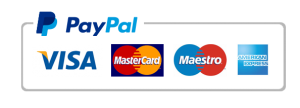Market Entry Strategies International Firms
Market Entry Strategies International Firms
This is a paper that requires the student to research and evaluate company’s several aspects of the company’s organization. The paper also provides additional guidelines to use in the writing and submission of the assignment.
Evaluate company’s several aspects of the company’s organization
Research Paper
The purpose of the Final Paper is to demonstrate a culmination of the learning achieved in the course by describing your understanding and application of knowledge in the field of international business.
Focus of the Final Paper
Select a company that you are familiar with and also write a paper that evaluates several aspects of the company’s organization with respect to the concepts that were learned in this course. In the Introduction, please provide historical background of the company and also its financial and international dealings. The paper should be eight to ten pages in length (excluding the title and also reference pages, appendix, exhibits, etc.). Choose four of the following topics to explain:
Culture of the organization – values and norms
Ethics in international dealings
Foreign Direct Investment
Entry into the markets
Accounting practices
How it converts currency
Its international strategy
Strategic positioning
Marketing tactics
Your assignment must include at least one table and/or figure within the body of the paper that supports one of the four selected topics. Use proper APA formatting for the caption of your table(s) or figure(s). Additionally, you are required to use in-text citations, and to provide a reference page with at least 10 references, with a minimum of two from the Ashford University Library.
Text
Hill, C.W. & Hult, G.T.M. (2019).International business: Competing in the global marketplace (12th ed.). Retrieved from https://redshelf.com/
Chapter 20: Accounting and also Finance in the International Business
Web Page
Additionally, globalEDGE. (n.d.). Reference Desk (Links to an external site.). Retrieved https://globaledge.msu.edu/reference-desk
It will provide you with rich information that you need for developing your Research Paper and also doing business globally.

